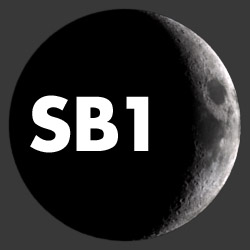

Xenodream Tutorial -
 Home
Galleries
N-1 Rocket
Tutorials
Articles
Email Me
Home
Galleries
N-1 Rocket
Tutorials
Articles
Email Me
Extreme Fisheye -
Here is a Xenodream tutorial, explaining a technique I use with extreme fisheye views, to 'round off' and distort an image. It assumes a working knowledge of Xenodream, and does NOT explain where to find the controls. (But the VIEW tab is a good place to start!).
I have attached before and after XEP files and images, of a sample, to make it as clear as possible.
The objective is to get an effect like a photographers fisheye lens, which exaggerates the centre of the field of view, and squishes the edge. Perhaps the most common example of this effect is the way that those security spy holes in doors make everyone look like Barry Manilow!
See tutor01.xep and the matching image for my starting point. Sort of a twisty field of rings. I did not make much effort with the lighting, so feel free to experiment.
Go to the VIEW tab. Tick the 'fisheye' check box. The effect is slight with current settings, but will be very effective after the next steps.
Look at the position information, in the VIEW tab. The camera is looking along the Z axis, and the object is 4.000 distance units away. We want to bring it closer, so click in this, and drag the mouse down until the distance is about 0.600. The object now more than fills the viewing area. (Different objects may require different distances).
So now we need to make it fit again. Go to the ZOOM control, and reduce this value until it fits in again. You will need to reduce the value to about 22. Note how the section in the centre of the screen expands, while the edge distorts towards a circular shape.
You can go even more extreme, but once you get very close you will run into problems
-
Making the most of these views:
The different parts of the image are in very different directions, and therefore the lighting will look different too. If you use lighting that emphasises shape, such as strong shadows, and broad highlights, this will appear stronger, and emphasize the distortion. If you want a 'flatter' look, turn off shadows and highlights.
There is one big drawback to this technique. You have a small part of the object very close to the camera. This can increase the time to produce a smooth image quite a lot, particularly at large render sizes. So you may want to stick with XEP's that render fairly quickly, and keep the number of lights with shadows low.
A less serious issue is that it becomes very fiddly to adjust the camera position, and dragging the object in the field of view will change the image, rather than just reposition it. But this can be a powerful way of making a big change in the image with a tiny change in the parameters.
Remember when deciding to use this technique that it exaggerates the centre -
Downloads and sample images:
Click Here to download the 'before' XEP file.
Click Here to download the 'after' XEP file.


‘Before’ Image
‘After’ Image